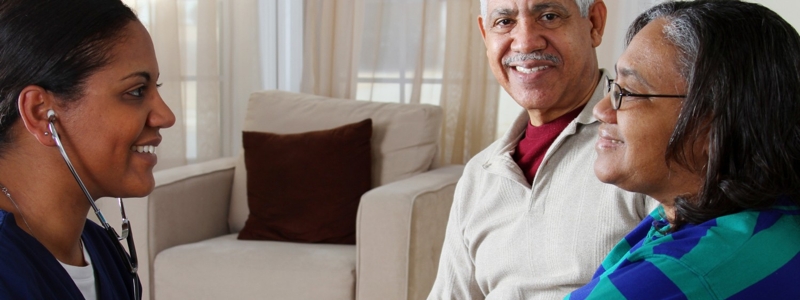A bronchoscopy is a diagnostic procedure used to examine the airways of the lungs, called the bronchi and bronchioles, for any abnormalities or to determine the cause of symptoms such as bleeding, difficulty breathing or a chronic cough.
This procedure can diagnose lung disease, remove objects blocking the airway, evaluate and treat growths, control bleeding and treat cancer. Bronchoscopy is performed with a bronchoscope, a long, thin tube with a camera and light on the end that is fed through the mouth to the airways in order to examine the throat, larynx, trachea and lungs for any abnormalities.
Your doctor can view the area in real time on a video monitor as he controls the bronchoscope.
Reasons For Bronchoscopy
A bronchoscopy is performed when an abnormality is observed on an X-ray or other diagnostic imaging test and may be performed on patients who have one or more of the following symptoms:
- Unexplained lung growth, lymph node changes or atelectasis
- Suspected interstitial lung disease
- Hemoptysis
- Obstruction of a bronchial tube
- Unexplained cough for more than 3 months
- Prolonged or puzzling infections in the respiratory tract
- Inhaled toxin
- Lung rejection after transplant
Goals Of A Bronchoscopy
A bronchoscopy may result not only in diagnosis, but in the treatment of a condition. During a bronchoscopy, the doctor is able take a biopsy of tissue in the lung or airways when cancer is suspected, or to:
- Remove fluid or mucus from the airways
- Remove a foreign object from the airways
- Dilate an airway that is blocked or narrowed
- Drain an abscess
- Treat cancer by radiating a tumor directly
- Stop bleeding in the airways
- Put in a stent to open constricted air passages
- Cleanse an airway, known as therapeutic lavage
Types Of Bronchoscopy
When bronchoscopy is performed for diagnostic purposes, biopsies to determine the presence of lung or lymph node cancers can be taken. Therapeutic uses include the removal of a foreign object from the airways, dilation of an airway that is blocked or narrowed, draining an abscess and placing a stent to keep an airway open.
Electromagnetic Navigational Bronchoscopy
Electromagnetic navigational bronchoscopy, or ENB, is a form of diagnostic bronchoscopy. ENB is used to detect and help treat peripheral lung lesions, and can detect lung disease even before symptoms are present, improving the patient’s prognosis. The procedure is performed under anesthesia, using CT imaging to create a 3D picture of the lungs. The bronchoscope is inserted through the patient’s mouth and into the airways of lungs, and catheters are placed into the bronchoscope channel. Biopsy tools are then used to collect tissue samples for diagnosis and testing. Because ENB is minimally invasive, it reduces the potential for complications that are more likely to result from an invasive surgical procedure.
Unlike traditional bronchoscopy, ENB can reach lesions deep within the lungs, and it is an effective alternative to needle biopsy. The procedure usually takes 30 minutes to complete.
Endoscopic Bronchial Ultrasound
Endoscopic bronchial ultrasound, or EBUS, is a technique that combines ultrasound and bronchoscope technology to diagnose and evaluate the stages of lung and bronchial cancers. Performed while the patient is under sedation, EBUS involves the insertion of a flexible endoscope with a small ultrasound tool attached through the patient’s mouth and trachea. This provides the doctor with a detailed view of the lungs in order to diagnose lung disease and determine the severity of the condition. The entire procedure generally takes about 30 minutes to complete, and patients can usually return home the next day.
Bronchial Thermoplasty
Bronchial thermoplasty, or BT, is a therapeutic form of bronchoscopy, primarily used to treat severe cases of asthma. Using a catheter inside a flexible bronchoscope, the procedure is performed to deliver controlled amounts of thermal energy through the patient’s nose or mouth and into their lungs, helping minimize airway constriction. The patient will be monitored closely following the procedure, and can usually return home the next day. BT typically requires multiple treatment sessions, which are generally scheduled approximately three weeks apart.
Recovery From Bronchoscopy
After a bronchoscopy, a follow-up visit is scheduled for the patient to discuss the results of the procedure with the doctor. If a biopsy was taken, it will take a few days for the lab results to become available. The recovery from the procedure itself is usually short and uneventful, although the patient may experience a sore throat or hoarseness for a day or two.


